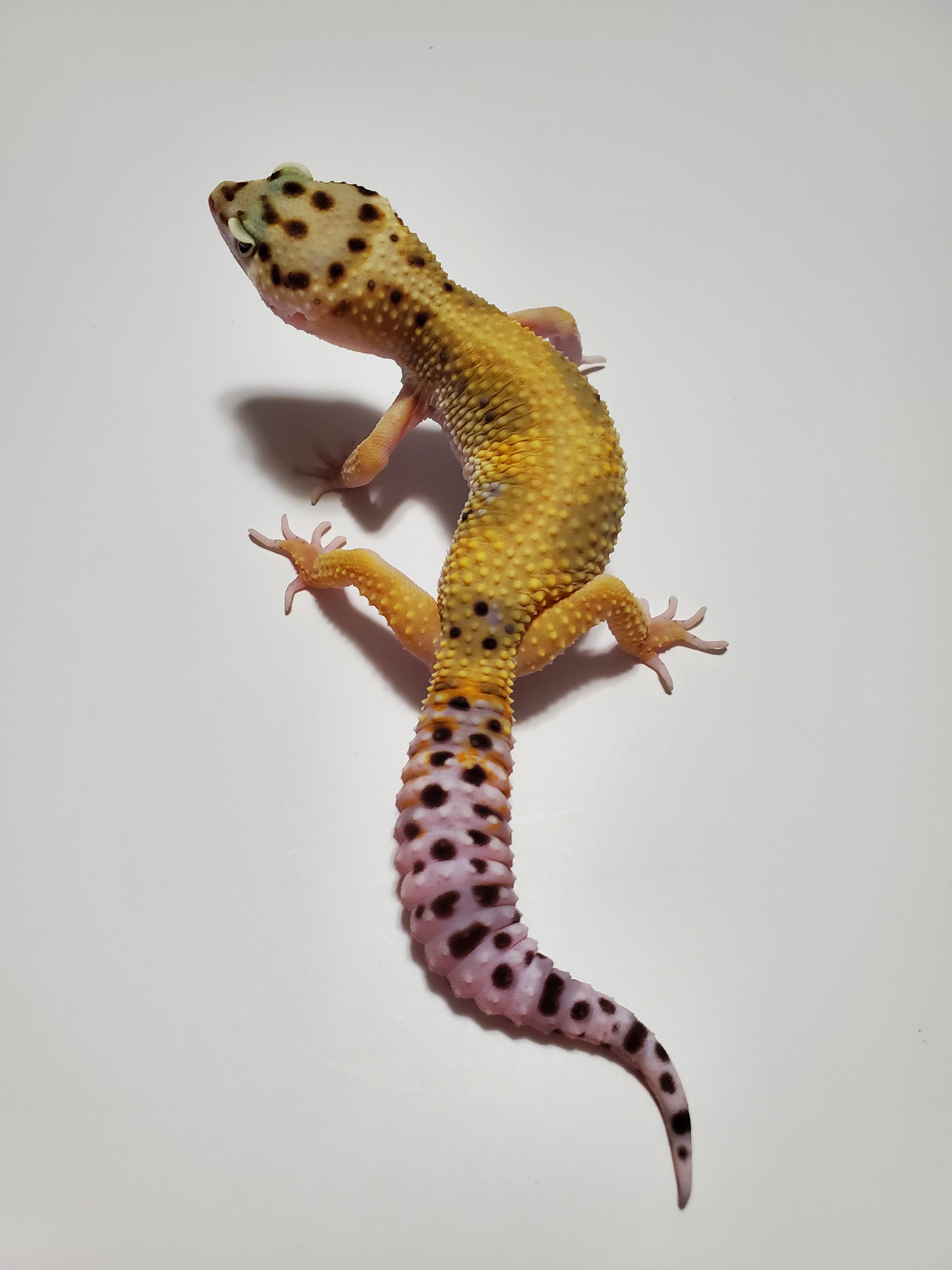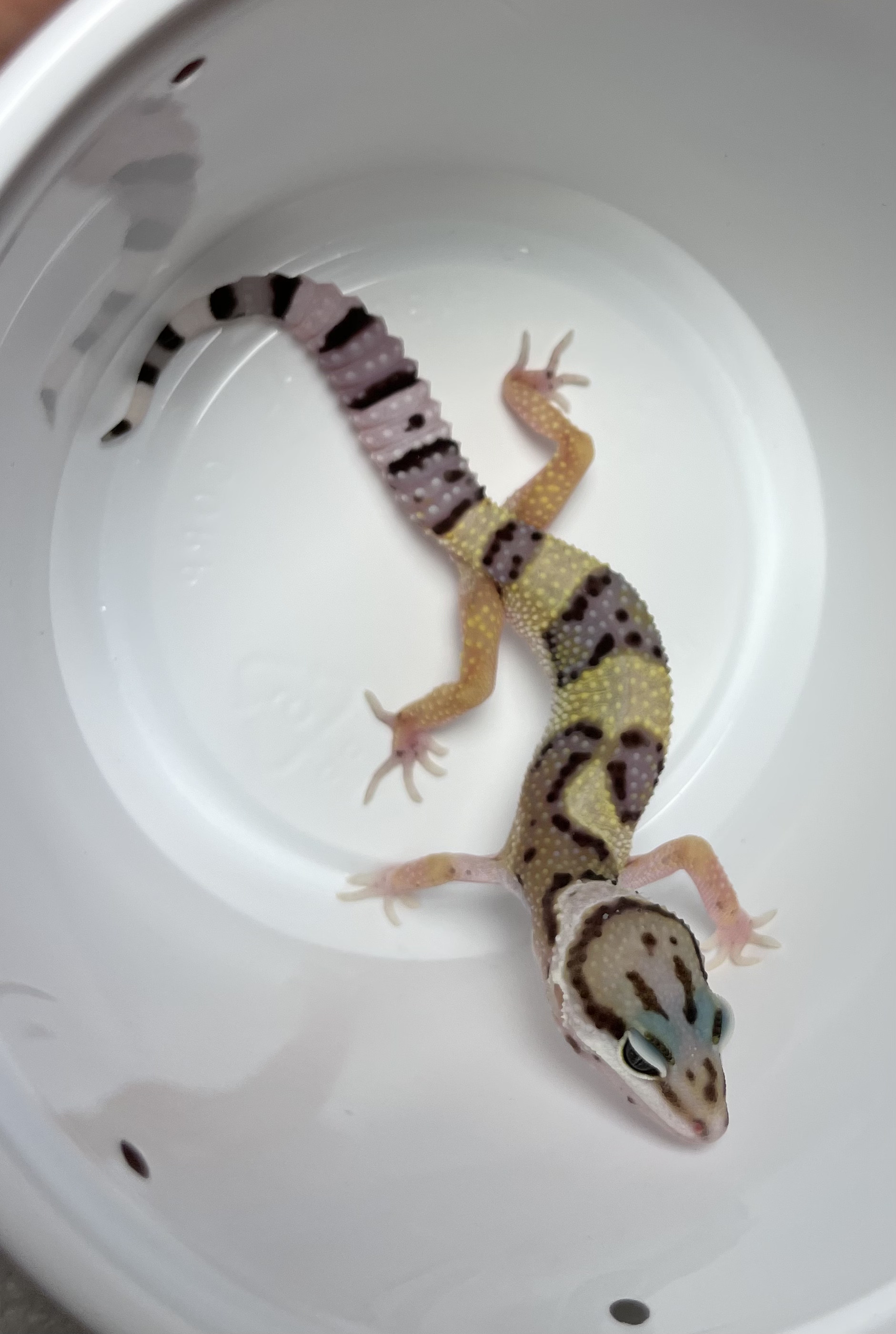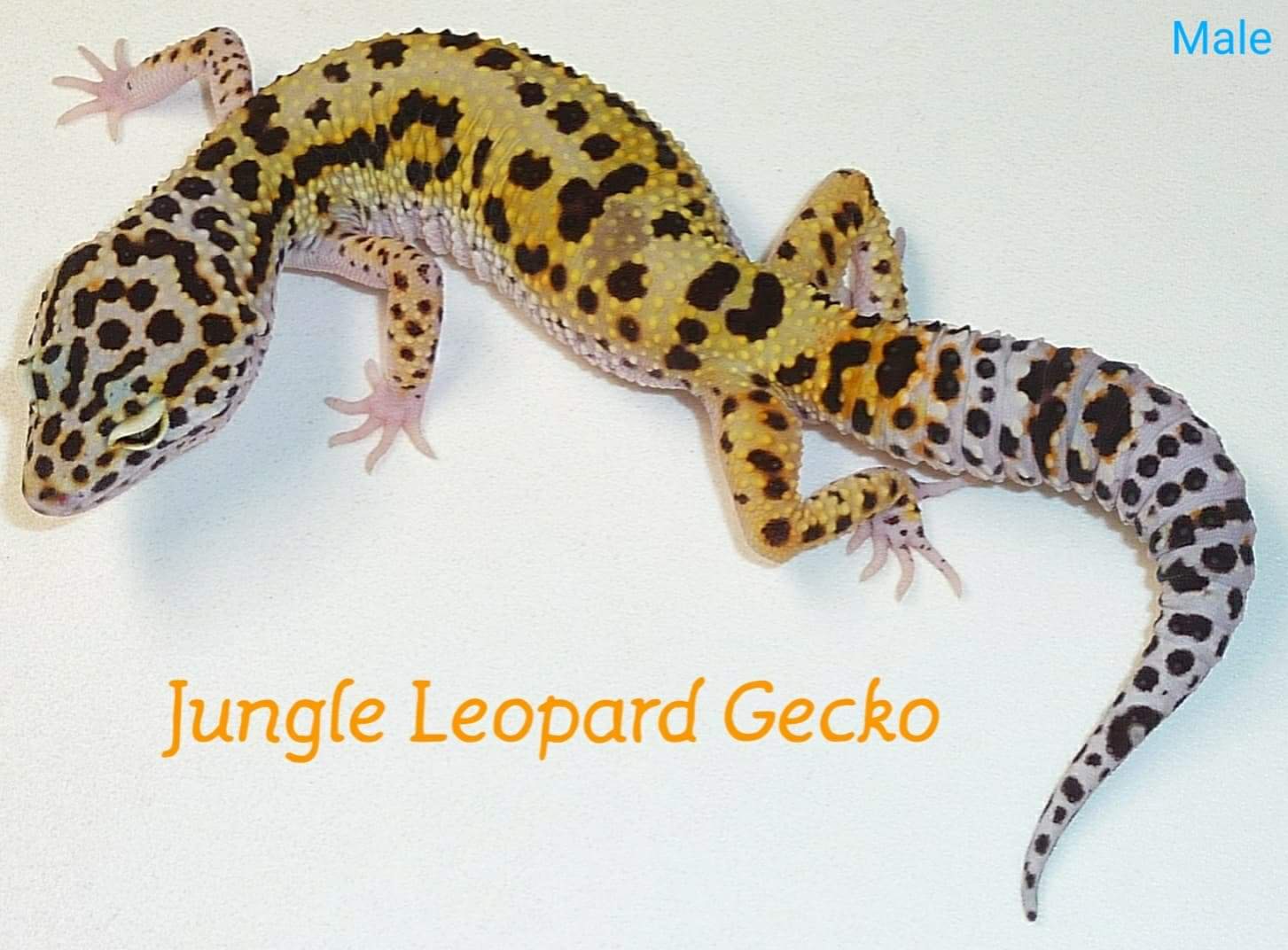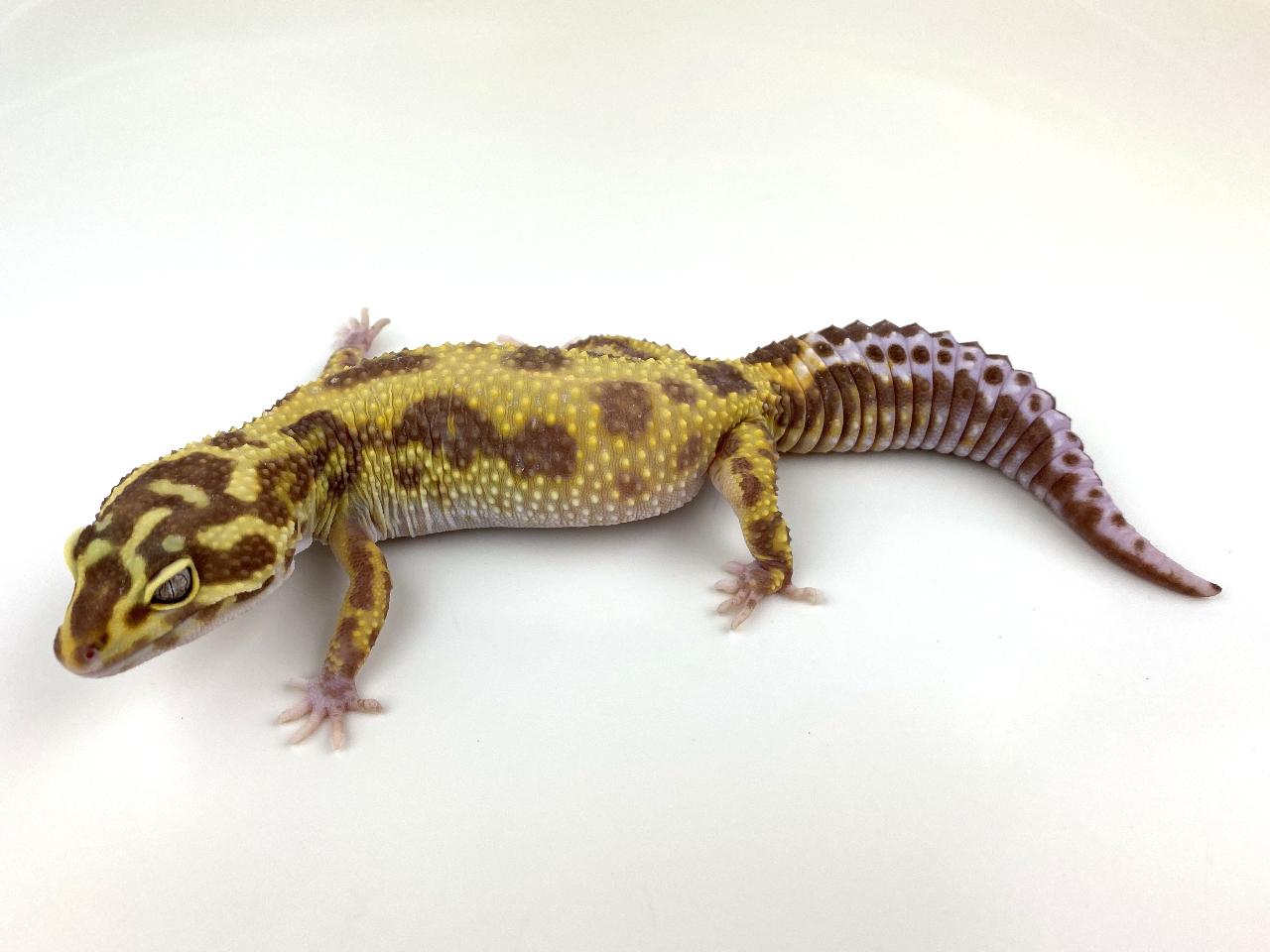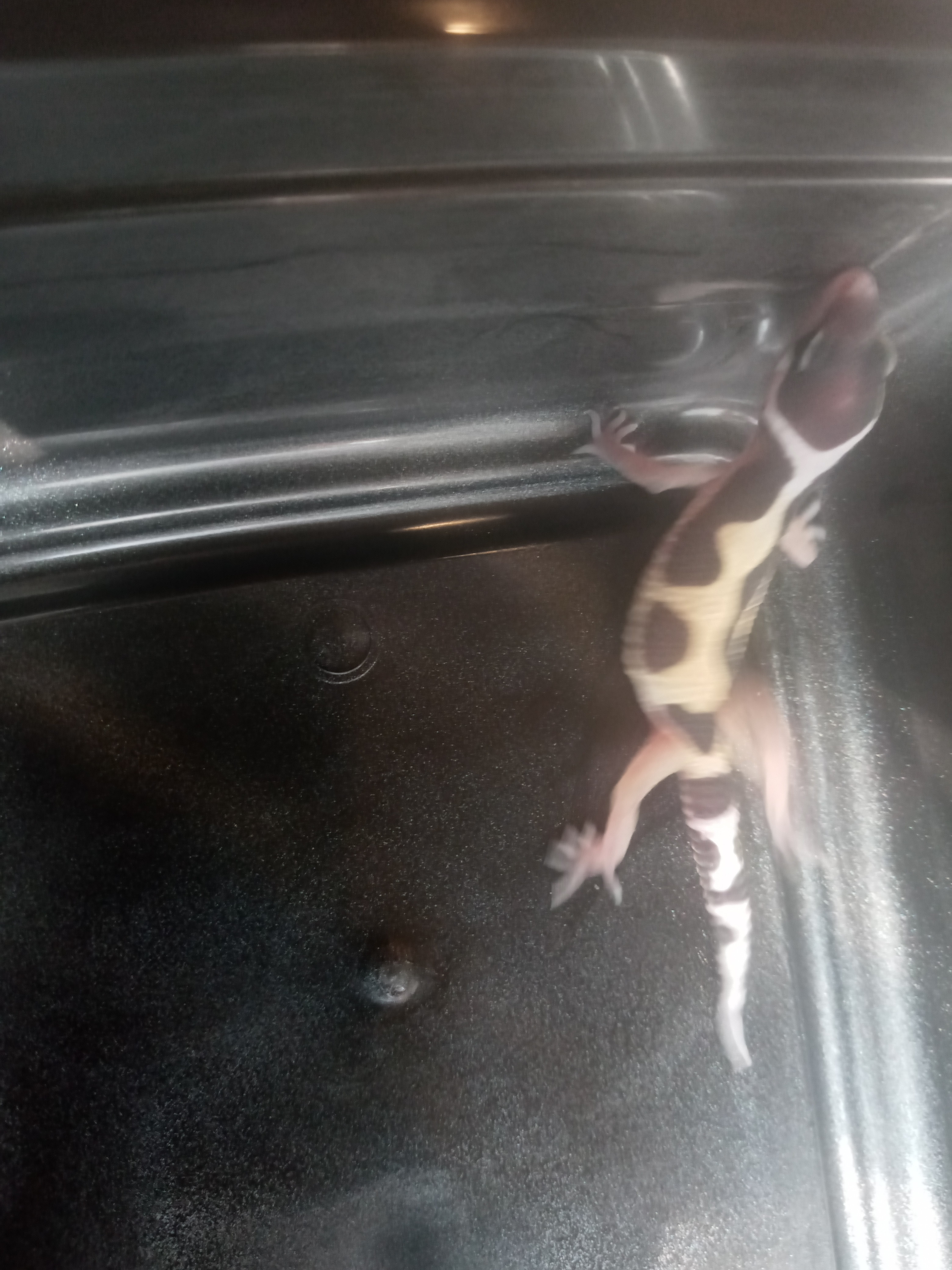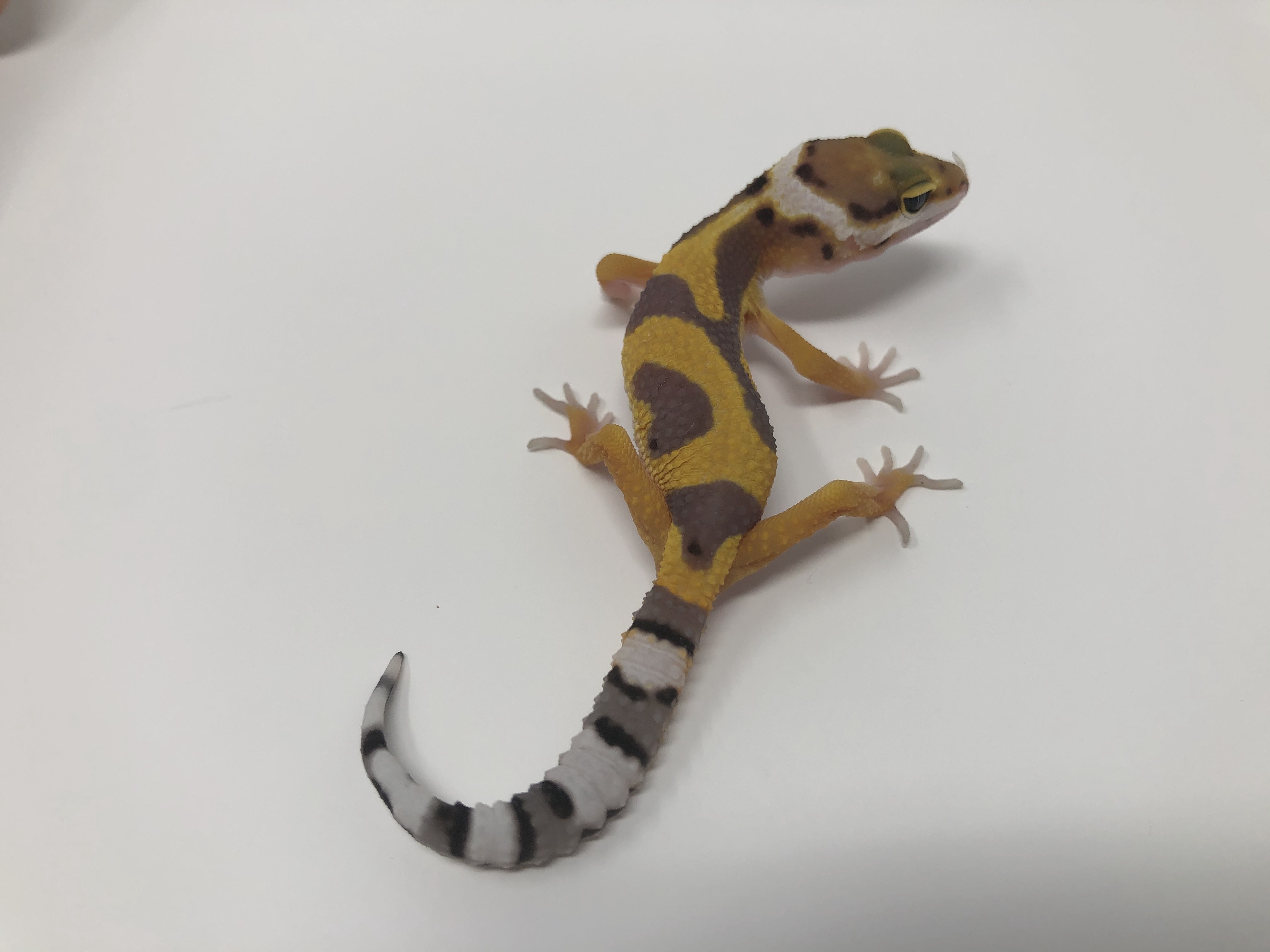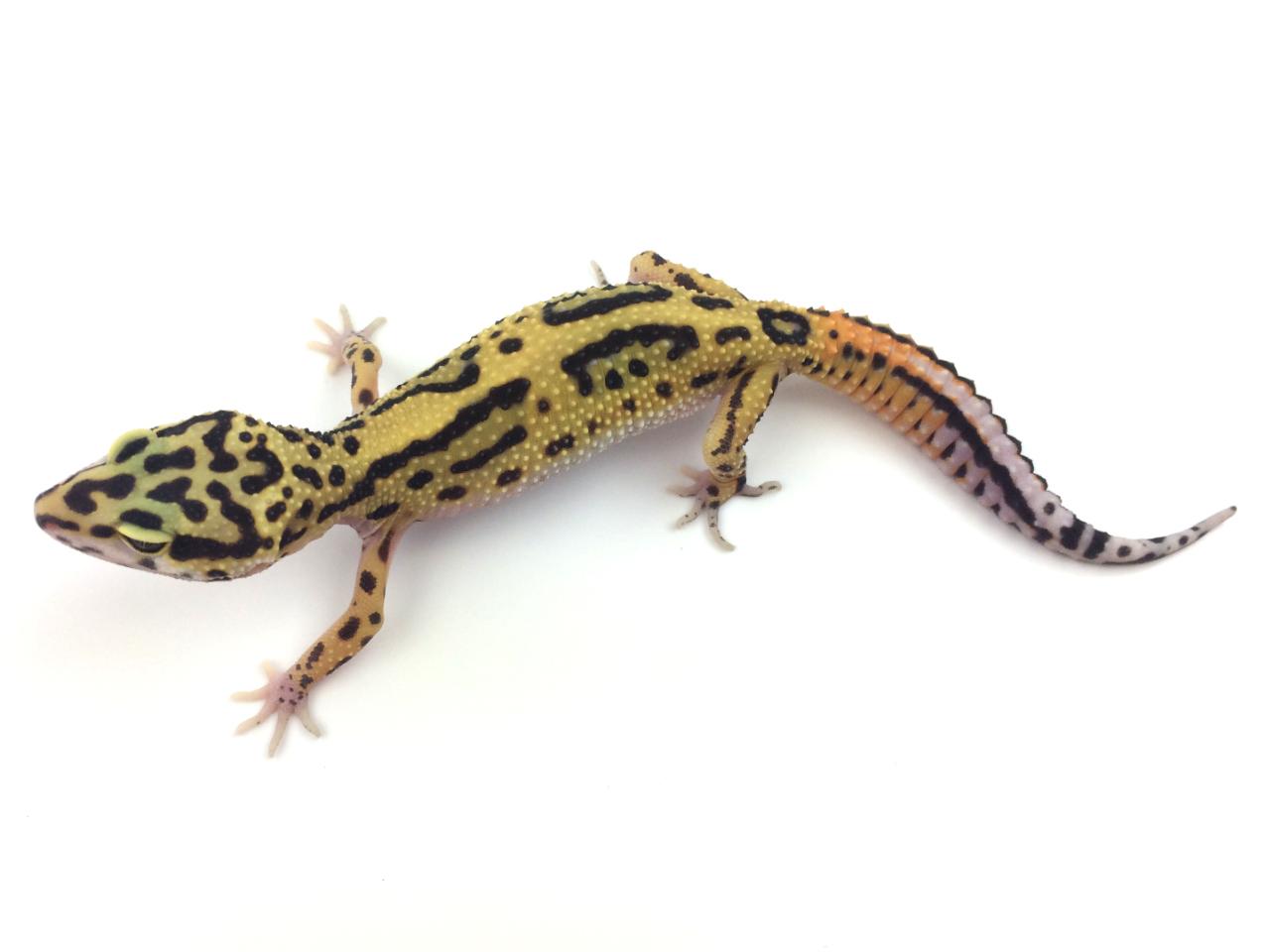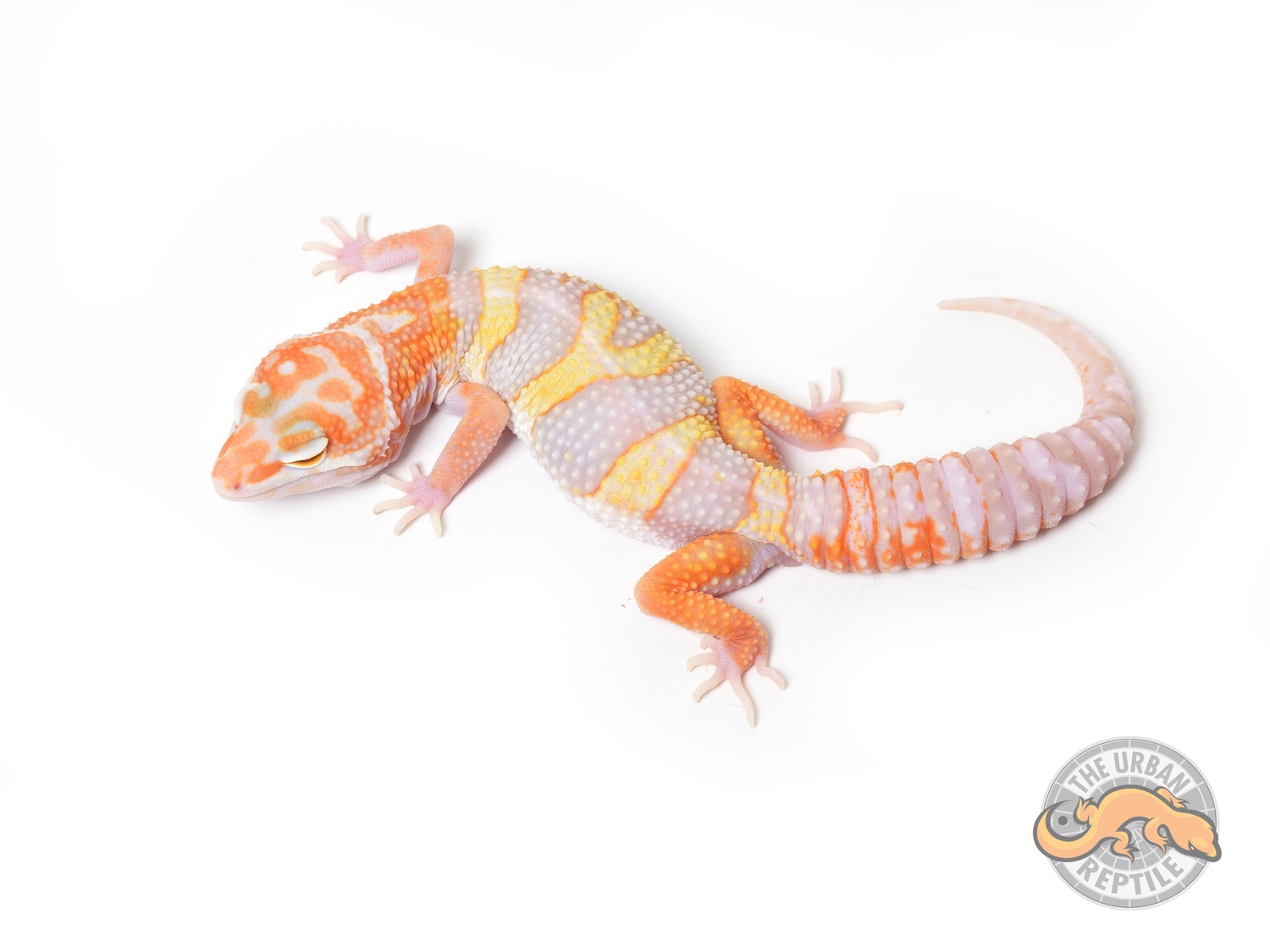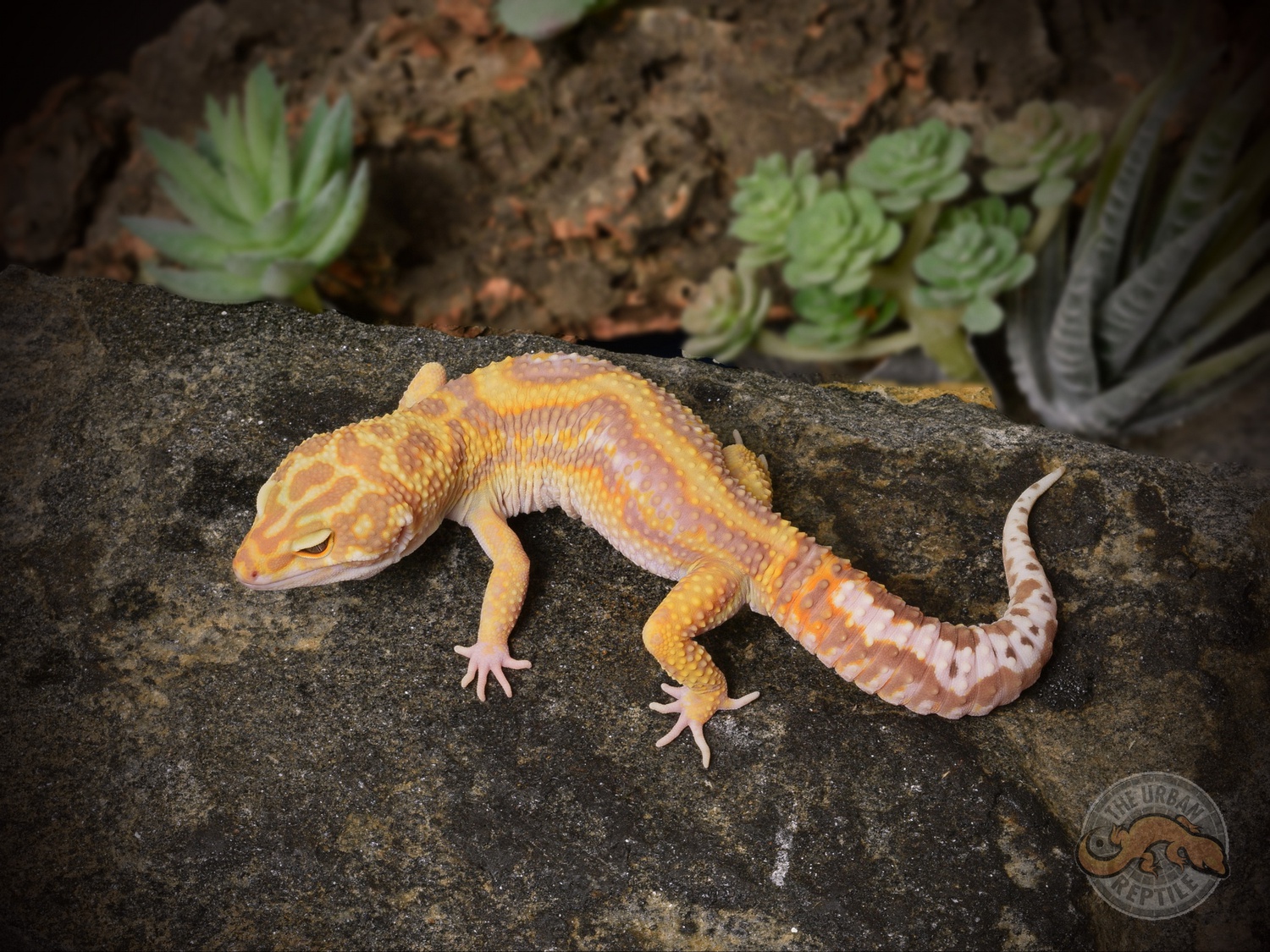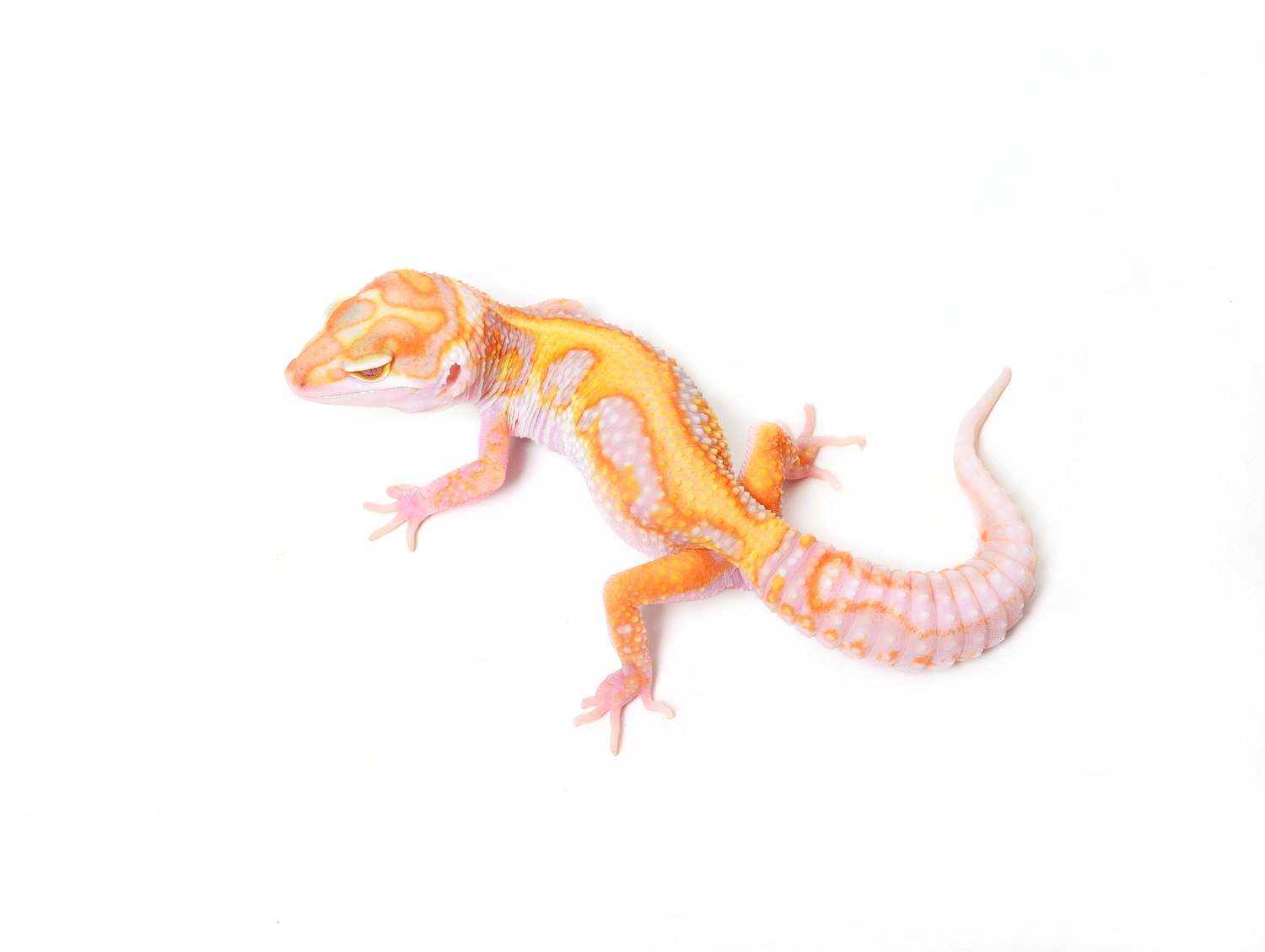Jungle
Type: Polygenic
First Produced By: Ron Tremper
Aliases: Aberrant, Funky Jungle, Jungle phase
Issues: N/A
First Produced In: 1991
Availability: Higher
Last Updated: 2022-06-02
Do you have any suggestions or corrections for this article?
Click here to contribute feedback
About
A Jungle leopard gecko is a leopard gecko whose body and tail pattern are irregular. The body pattern will have broken or incomplete bands; the tail will not be banded, and will feature broken or absent bands.
Jungle x Jungle seems to produce mostly, but not 100%, Jungles. On rare occasions, a Jungle is produced by non-Jungle parents. In other words, it’s complicated and probably governed by multiple genes.
An aberrant pattern of broken stripes, usually extending onto the tail. Some will form full-length stripes, and many breeders sell these as ‘Striped’. Not all Jungles breed true, as this trait appears dependent upon several mutated alleles. These must be present to produce a Jungle, but specimens with mutated alleles may also appear normal - or combinations of normal and jungle patterns. When breeding jungles, you may get a variety of patterns - selection plays almost as big a role here as genetics and caution should be exercised with regard to specimens sold as heterozygous, as the results obtained from breeding them will not follow expected Mendelian rules of inheritance.
History
Appearance
Body
Individual Jungle leopard geckos have unique patterning on their back, which means you will very rarely find two that look exactly the same.
Tail
The tail of the Jungle leopard gecko will display broken or absent bands.
Controversy
Throughout the years, many people have thought of the Jungle trait as line bred/polygenic, but recent developments have proven this is not necessarily the case. Many people buy so-called heterozygous Jungle specimens, but fail to ever produce Jungle animals. Consequently, some people consider it to be an incomplete recessive, which means that the Jungle morph works like a recessive trait most of the time, but can vary and act as a line bred trait.
Breeding Jungle leopards presents a special challenge. Which exact traits create the Jungle morph is not known. It isn’t known whether they are recessive or dominant traits.
Many Jungle leos don’t show any Jungle patterning at all. Then, their hatchlings will show the tell-tale signs of the morph. Often, hatchlings won’t appear to be Jungles until they are fully grown.
This is why Jungles are so rare and special. Breeding them is a challenge.
Proven Lines
No known proven lines
Related Traits
No known related traits


